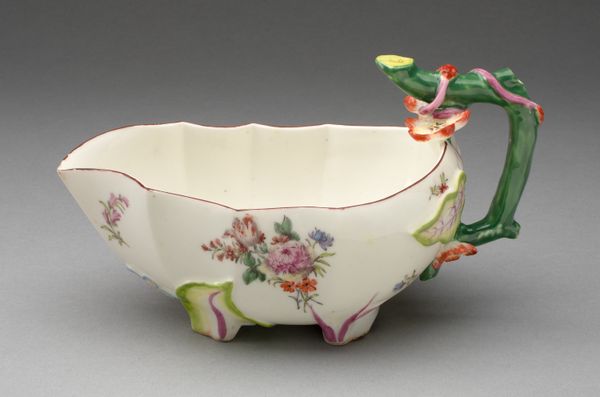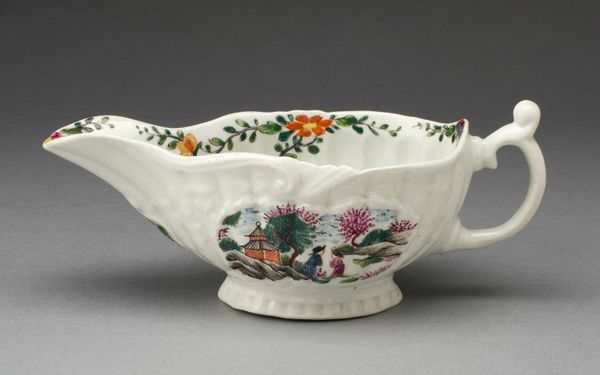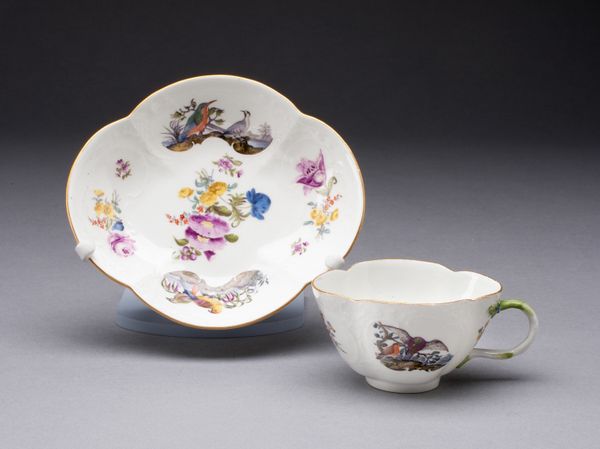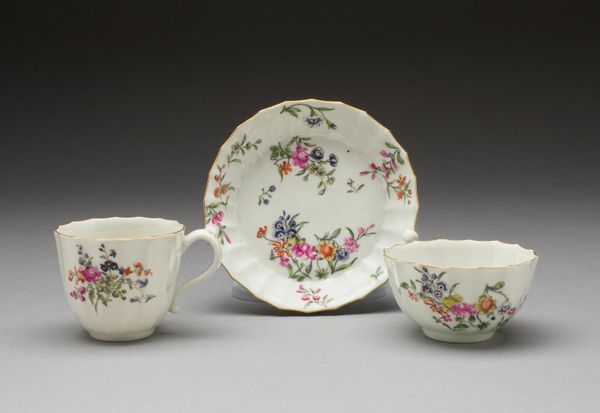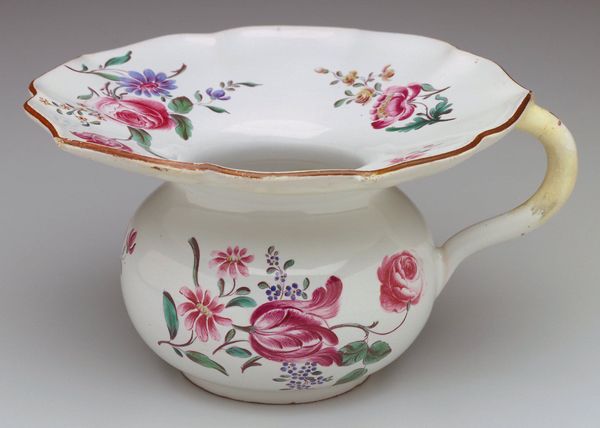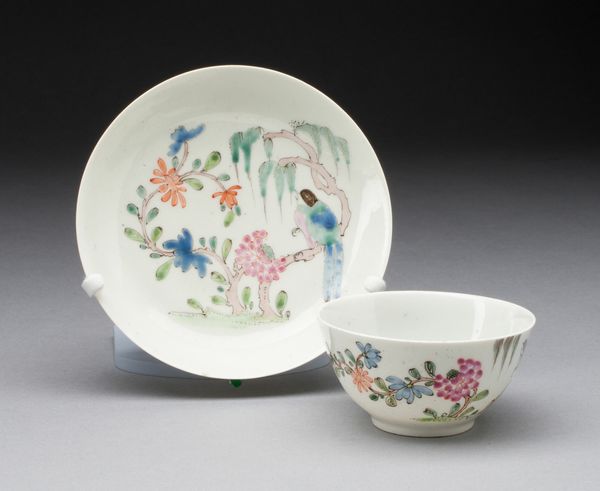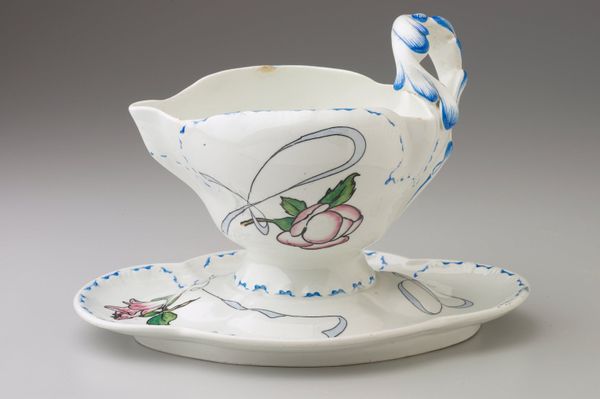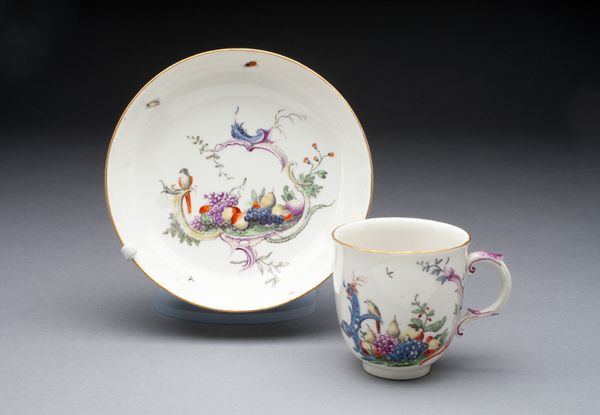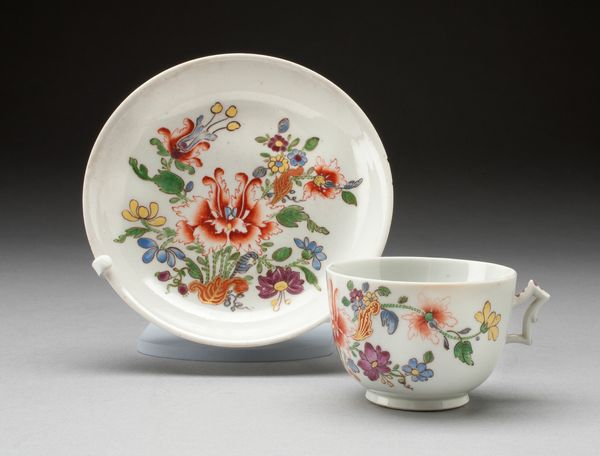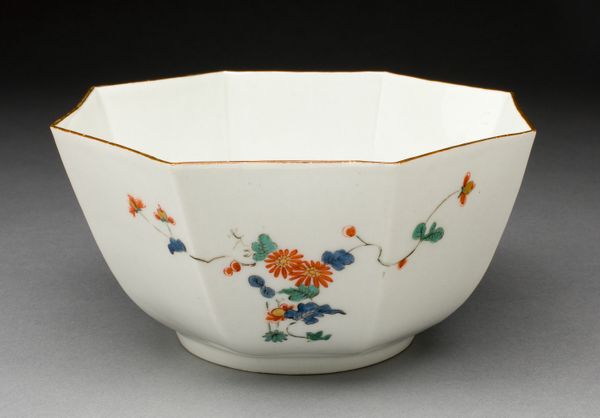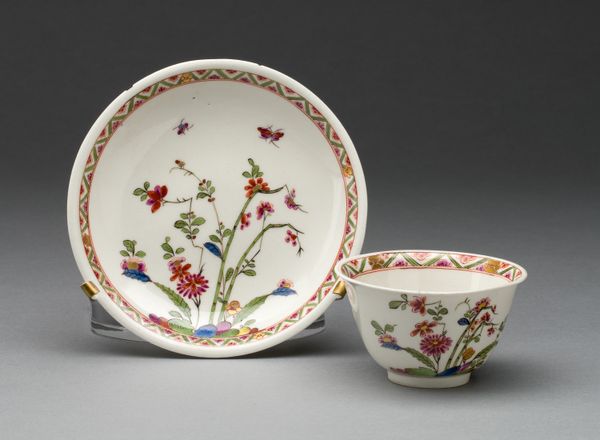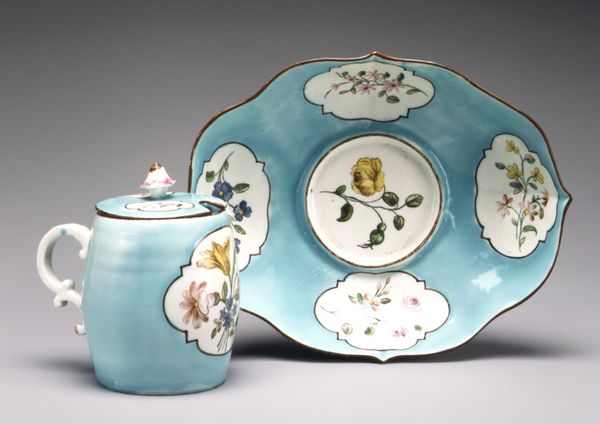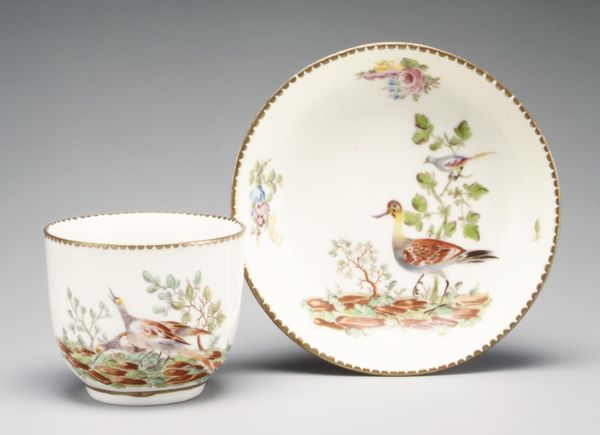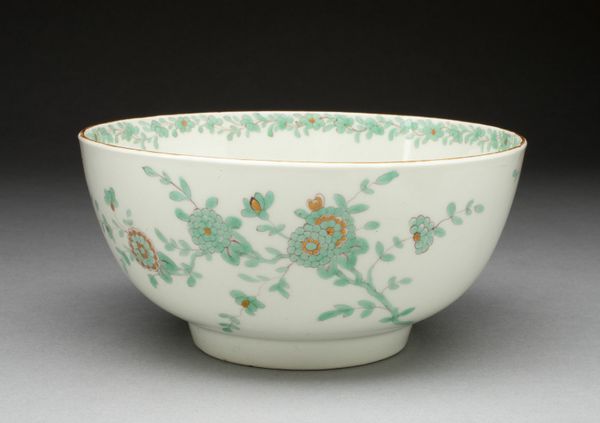
mixed-media, painting, ceramic, porcelain
#
mixed-media
#
painting
#
landscape
#
ceramic
#
porcelain
#
decorative-art
Dimensions: 9.8 × 16.2 × 8.7 cm (3 7/8 × 6 3/8 × 3 7/16 in).
Copyright: Public Domain
Curator: Welcome to this gallery featuring a creamware ceramic piece. This object, dated circa 1815, is called "Creamer" and comes from the Wedgwood Manufactory. You'll find it amongst the decorative arts. Editor: It's a charming object, isn’t it? The delicate porcelain, the hand-painted landscape. There’s a certain tranquility about it. It’s clearly designed to enhance an everyday ritual, to elevate the simple act of pouring cream. Curator: Precisely. Consider the material. Wedgwood’s creamware, a type of refined earthenware, revolutionized ceramics. Its light color and smooth surface made it ideal for both mass production and elaborate decoration. They mastered the division of labour allowing for each stage of making to be perfect for consumption. Editor: I’m struck by the implications of a factory specializing in luxury objects. Who was benefiting from this art? The pastoral scene it shows is so romantic, almost idyllic, a world away from the potential realities for labourers during the height of the Industrial Revolution. What does this idealized, decorative image mask? Curator: That's a compelling reading. Wedgwood was keenly aware of his market. He wanted to produce objects for a rising middle class that aspired to aristocratic taste. By merging the burgeoning factory production methods and refined artistic imagery, this became achievable. This specific creamer uses painting, an incredibly sought after form of craft and a symbol of status. Editor: Absolutely. The bridge depicted—the sole human figure upon it—it becomes a poignant metaphor for transition, not only across the river, but perhaps also across social classes or economic landscapes. It's like the owners of these pieces want to bridge their new-found riches with traditional forms of status. Curator: Indeed. I see it more as how material production and artistic intention intertwine. The landscape scenes were a fashionable choice, referencing the picturesque aesthetic popular at the time, thus the creamer serves not just as tableware but as a symbol of cultural capital. The landscape allowed the form to sell itself, whilst still alluding to classicism through the romantic form and the gold detailing. Editor: And how it fits within the larger story of societal aspiration, production and access to art, right? Considering what an incredibly exploitative system early industrial factories ran, looking at pieces like this helps us consider these important dynamics. Curator: Thinking through the relationship between materiality and manufacturing and socio-economic considerations offers a powerful interpretive lens here. Editor: Exactly. Let's proceed, shall we?
Comments
No comments
Be the first to comment and join the conversation on the ultimate creative platform.

